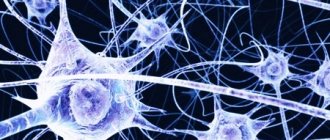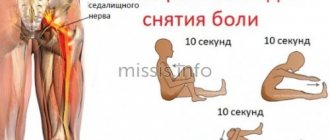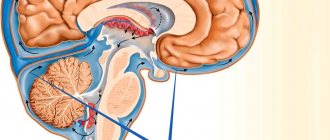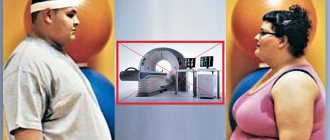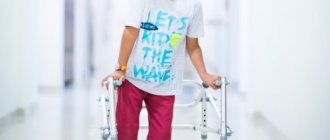Basic information
The biofeedback method (BFB) is primarily a universal principle of human interaction with various systems of his body. Some household appliances, for example, an iron, work according to the same scheme. There the feedback is used as a temperature regulator. The human body uses the same system to regulate mental and physiological processes.
The essence of biofeedback therapy (biofeedback method) is to build an additional data channel that reflects the autonomic functions of the body and allows you to control them. It became possible to carry out such manipulations quite recently, only after the creation of a certain kind of electronic devices that could reflect minimal changes in physiological characteristics simultaneously with the experiment.
Biofeedback therapy is a modern method of rehabilitation.
COMPUTER BIOfeedback is a conditioned reflex regulation of the physiological processes of the body, based on the principle of biofeedback, carried out using hardware and software computer systems.
This is a method of volitional control of body functions in order to improve them normally (in high achievement sports) and correct them in various diseases. Computer biofeedback technology is a highly effective non-drug method of diagnosis and treatment, which allows you to take into account the individual characteristics of the human body, select adequate physical activity for training, dose and monitor its implementation. The use of modern computer multimedia capabilities, graphic and digital recording of the results of computer biofeedback training ensures high emotional interest of participants and overall effectiveness.
In accordance with the classification of physical methods of treatment (Ponomarenko G.N., 2006), computer biofeedback is a method of modulating the functional state of the body. The object of computer biocontrol is a person.
Computer biofeedback or biofeedback ( BOS or biofeedback - English) - (adaptive or functional biofeedback, biorehabilitation, visceral training) is a modern rehabilitation method aimed at activating the body's internal reserves in order to restore or improve physiological skills.
The biofeedback method is a set of procedures during which information about the state of a particular function of his own body is transmitted to a person through special technical devices (external feedback circuits). Based on the information received, the patient, under the guidance of an instructor, using special techniques and equipment, develops self-control and self-regulation skills, i.e. the ability to arbitrarily change any physiological function of the body to correct pathological disorders.
There are certain prerequisites for implementing the biofeedback method in medical rehabilitation:
- Obtaining information about the operation of any physiological systems or internal organs, and under normal conditions this information is inaccessible to humans.
- Teaching the patient to voluntarily control the work of these physiological systems or internal organs.
- To solve these problems, use special technical devices designed to present information to the patient (and/or biofeedback instructor) in a form accessible to humans.
Visual feedback is an object on the monitor screen, the movement of which reflects a change in the value of the recorded parameter from which feedback is generated.
Audio feedback is a sound, a change in volume and tone of which reflects a change in the value of the recorded parameter from which feedback is generated.
Visual and audio feedback signals make it possible to see and hear the work of body systems and, based on this information, quickly and reliably develop certain skills.
From the point of view of cybernetics, the human body as a whole can be compared to an open information system, which includes the following elements:
1. Source of information. 2. Information recorder (transmitter). 3. Information transmission channel (conductor). 4. Information receiver. 5. Information consumer. 6. Source of interference.
Sources of information are stimuli from the external or internal environment; a visual, auditory, tactile or some other receptor acts as a recorder of information.
The transmission channel is a nerve fiber, the information receiver is a neuron that processes and transmits information to other neurons.
Information consumer - structures (groups of functionally connected neurons) of the nervous system (brain and spinal cord) that evaluate incoming information and ensure the implementation of the appropriate action, the results of which are returned to the control organ in the described way. The feedback circle is thus closed.
The described system even has its own source of interference, which can be injuries and diseases of the human nervous system.
on the principles of feedback , ensuring the constancy of the internal environment of the body : the depth and frequency of respiration depend on the content of carbon dioxide and oxygen in the blood, cardiac output is closely related to the intensity of physical activity, the supply of the hormone insulin is controlled by the level of glucose in the blood, etc. .
BOS equipment:
- device “Nexus-10 Mark II” from Mindmedia (Holland),
- biofeedback rooms for cardio-pulmonology, musculoskeletal, prevention and treatment of urological diseases of JSC "Biosvyaz" (Russia, St. Petersburg).
Computer biofeedback hardware systems consist of:
- Device-recorder of various physiological parameters of the human body - EEG, ECG, EMG, SPG, FPG, GSR, TKP;
- A computer with patented software that converts physiological signals into digital ones;
- Peripherals in the form of monitors for visual feedback and music systems for audio feedback.
Thus, a musculoskeletal biofeedback room “PBS biofeedback” method (five-channel); software with the program "Mio 2.2C" and "CARDIO 2.11C" ; computer complex with software.
The device “Nexus-10 Mark II” (Holland) is a device for 10-channel monitoring of various physiological parameters of the human body and biofeedback, using Bluetooth (10-15 meters distance from the sensors on the patient to the doctor’s computer) and a map Memory Flash memory (24-hour monitoring of any parameters of the body according to the well-known Holter type) with autonomous power supply from rechargeable batteries.
“Nexus-10 Mark II” is a biofeedback device that allows not only complete functional diagnostics of the body, but also computer bioregulation of various functional systems of the body based on visual and audio biofeedback according to standard parameters EEG, EMG, ECG, SPG, pulse blood filling of blood vessels, skin thermometry and skin resistance.
Device “Nexus-10 Mark II”
“Nexus-10 Mark II” device is equipped with the following sensors:
- ECG - electrocardiogram,
- EMG – surface electromyogram,
- EEG – electroencephalogram,
- oximetry (monitoring blood oxygen),
- accelerometer (movement speed),
- pulse blood filling of vessels,
- respiration sensor (frequency and depth),
- temperature sensor,
- skin resistance sensor.
The software allows you not only to simultaneously monitor the main functions of the body - breathing, heartbeat and heart rate variability, brain biorhythms, muscle activity, temperature, electrical resistance of the skin, etc. - but also to actively influence them using video and audio feedback . Computer biofeedback technology provides a unique opportunity for self-regulation of various physiological reactions of the body, which are usually not controlled by consciousness.
A dual-monitor system is used, which allows, during computer biofeedback sessions, to display on the monitor screen of the doctor-operator information about the current functional state of the patient’s body (pulse, respiration, muscle activity, bioelectrical activity of the brain, temperature, electric skin resistance, etc.), and At this time, a bioregulated figurative demonstration of the same physiological information occurs on the patient’s monitor screen.
History of creation and development
It was only in the late sixties of the last century that the term biofeedback first appeared in the United States. Biofeedback was actually used back in the thirties on rats. Scientists have discovered that animals change the functioning of their organs if they are rewarded or punished. Experiments have shown that using this technique, it is possible to teach a subject to produce a certain amount of gastric juice or maintain a certain level of blood pressure. The impact can also be exerted on the heart and other internal organs. After some time, it was decided to test the biofeedback method on people. This made it possible to understand that a person is able to record the indicators of his body simply by learning about a deviation; he does not need rewards and punishments for this.
The very first documentary publications appeared in the forties and they related to the ability to control cardiac activity. A little later, works became available on the use of myograms as a parameter for teaching people to relax. This made it possible to treat pain of neuromuscular origin. It was only at the end of the last century that the benefits of biofeedback as a psychotherapeutic method were noticed. At the moment, research is still being conducted on this type of effect on the human body. However, this type of therapy has been very successfully used in various areas of medical therapy, allowing to minimize or eliminate drug treatment for patients.
Characteristics of psychotherapy
The biofeedback method in psychology is applicable as a relaxation and behavioral component. The basis of this principle was the dependence between the mental and vegetative functions of the human body. Feedback is provided using a sensor. This is a device capable of recording and converting all data relating to any changes in physiological parameters.
This refers to muscle tension, temperature, skin resistance, contraction of the heart muscle, blood pressure, etc. All these indicators are actually related to the emotional state of the patient and his task is to change them in the right direction. This allows a person to learn to self-regulate his body in a targeted manner, with the aim of further influencing the pathological processes occurring in it.
Biofeedback training on stress management
We conduct special psychophysiological research and training using biofeedback technology, as a result of which we determine your holistic personal characteristics, your physical condition and resistance to the frustrating and stressful effects of difficult situations. During classes and trainings, we will teach you how to independently control the state of your body in stressful situations, i.e. Confidently master the skills of neuromuscular relaxation.
In an era of economic instability and high competition in business, there are many factors influencing mental stress in the workplace. Activities in business are associated with great psychological stress. We have to adapt every day to constantly changing working conditions and work situations, an accelerated pace, intense and sometimes irregular work schedules, endless deadlines, which leads to constant professional stress, emotional burnout and various diseases.
In some professions, the result of work directly depends on the internal state of employees: resistance to stress, endurance, the ability to quickly make decisions (sometimes intuitively), as well as the ability to recover and have quality rest. The cost of a mistake for people in such professions is extremely high. The need to quickly make decisions on which people’s lives may depend, working in non-standard conditions with irregular work hours and time pressure are specific to work in many industries.
The nature of occupational stress is multifaceted, and overcoming it requires hard work.
All this has a negative impact on concentration and the speed of making responsible decisions. Added to this is the psychological climate in the team, on which the psychological state of all employees without exception depends entirely. In a team in which interpersonal relationships are in a tense state, conflicts and misunderstandings are not uncommon. This can cause internal tension to build up and cause severe stress.
Deterioration in well-being associated with conflicts at work leads to the development of serious emotional disorders.
There are many reasons why a person experiences severe stress in the workplace. Most often, this is the fear of being fired, making a mistake when performing responsible work, fear of being misunderstood and fear of not being able to cope with the work, overload, difficult schedule, physical conditions, as well as relationships with colleagues and especially with management.
Types of biofeedback
At the moment, there are two main types of communication: direct and indirect. By direct biofeedback we mean a process carried out on that body function that is not working correctly and this is where the pathology itself is expressed. That is, if a person has hypertension, the effect affects only the level of blood pressure.
And indirect biofeedback is called one that affects all indicators, even if they do not directly relate to a person’s disease. Most often, biofeedback treatment uses temperature and electrical resistance of the skin. The fact is that it is these characteristics that best reflect the psycho-emotional state of a person. With increased tension, these indicators are low, and with relaxation of the body, on the contrary, they increase.
Biofeedback trainers and devices
Biofeedback simulators are the latest generation devices. The exercise machines are connected to computers that display the results of the exercises on the screen. If a person does something wrong during a workout, the computer signals this, thus controlling the strength and amplitude of the movement.
Biofeedback simulators come in the following types:
- for back extension : involves the interspinous muscles and extensor muscles of the back;
- for back flexion : engages the rectus and oblique (internal and external) abdominal muscles;
- for twisting : involves the internal and external oblique abdominal muscles, as well as the rotator muscles;
- lateral flexion : engages the psoas muscle, internal and external oblique abdominal muscles;
- neck exerciser : uses the neck muscles as well as the semispinatus capitis muscle.
Simulators of this type are produced by various companies, such as Tergumed, Medicom, MIST, etc.
Biofeedback devices
For modern computer systems, it is absolutely no problem to use any indicator of the functioning of the human body, including an encephalogram and an electrocardiogram. There are different devices: some record only one indicator, while others take into account several at once. According to some researchers, the most effective system is one that can reflect several characteristics at once. For this purpose, software and hardware systems were specially developed that operate on a PC.
Software
Specialized software has also been developed aimed at teaching self-regulation during interesting games. Basically, such equipment is used as a separate biofeedback facility for children. The biofeedback method, of course, is effective at the level of its hardware use, but the doctor also influences the therapy. In other words, the psychotherapist can be called the main link between the method itself and training. The subsequent results of the patient’s treatment depend on the doctor’s level of professionalism. The computer in this process is only a means of building a therapeutic relationship that helps the patient learn new things and change their behavior.
Biofeedback method
Beautherapy in Moscow is used by modern specialists for paresis, attention deficit hyperreactivity disorder, neuritis, and also after removal of plaster. To carry out biofeedback therapy, two components are required: software and a special biofeedback therapy device. This device contains sensors that record breathing rate, heart rate, and brain signals. The signals received from the sensors are then converted into the form necessary for PC recognition.
The method of functional biofeedback with feedback is used by rehabilitation doctors and neurologists at the Yusupov Hospital. During the procedures, European equipment is used, which is distinguished by the accuracy of the results and high speed of data processing.
The role of the doctor in biofeedback therapy
The doctor must immediately prepare the patient for this type of treatment. He gives motivational talks and instills hope that everything will work out. The doctor also explains the essence of the method, by what mechanism it works, and provides basic information about the pathological process that occurs in the patient’s body. It is also the doctor’s task to explain why this technique should help the patient.
When training begins, the psychotherapist must analyze the information provided by the equipment and information received from the patient himself. Based on these data, he explains to the patient how best to use them. The doctor is also obliged to give advice regarding the person's behavior, and suggest experimentation in order to find the best method of controlling the body's functions in a particular case. It doesn’t matter whether there are positive results of the experiments or not, he motivates the patient by talking about their presence.
Benefits of biofeedback
When a patient manages to master the skills of managing his body within the office, he needs to transfer them to everyday life. Here the psychotherapist needs to develop in the patient an active attitude towards therapy, increase his responsibility for the health and importance of the person himself. Among the advantages of the biofeedback method, the following are worth highlighting:
- the person personally takes an active part in therapy;
- the method is safe and harmless to health;
- There are practically no side effects (only in very rare cases).
Mechanisms of action
It was noticed that when practicing using biofeedback, a person begins to develop biochemical and physiological reactions that are opposite to stress reflection:
- the a-rhythm of the brain becomes stronger;
- blood pressure decreases;
- heartbeats become less frequent;
- peripheral vascular resistance decreases;
- the body needs less oxygen;
- electrical activity of muscles becomes lower;
- the level of renin, cholesterol, catecholamines and cortisol decreases;
- the endogenous opioid system works in a more enhanced mode;
- vascular reactivity decreases.
In other words, this method helps a person improve their ability to resist stress. Since the patient himself actively participates in therapy, his personal reserves for combating pathology are opened. During the treatment process, a person begins to understand the mechanism of the body and how to make the pathological process positive for him. If a person succeeds in self-regulation, his well-being becomes better, self-esteem and adaptation skills increase. Positive emotions received from observing positive results motivate a person to fight the problem more intensely, which increases the chance of recovery. The result of such treatment is a decrease in fixation on the patient’s experiences, which in turn affects the decrease in hypochondriasis and the level of aggression. The patient gains confidence in himself, his strengths and begins to look at life more positively.
Efficiency of the technique
At the moment, it has been proven that the biofeedback method after a stroke, for sleep disorders, migraines and other diseases is very effective. Particular importance should be given to the treatment of psychosomatic diseases: biofeedback copes with this task much better than other types of therapy.
A person’s ability to look at the world differently and change their thinking has a great influence on the effectiveness of practice. If you choose the right management program, you can get rid of depressive and obsessive states, hyperactive reactions, and block fears and tension. Thanks to this technique, patients with anxiety conditions can increase their self-control, which allows them to better adapt to the outside world.
What problems does biofeedback therapy help solve?
- depressive disorders (including dysthymic depression, bipolar disorder);
- anxiety disorders (panic attacks, GAD, OCD, etc.);
- neurotic disorders;
- psychosomatic disorders;
- disorders of physiological functions (sleep disorders, sexual dysfunctions, eating disorders, etc.);
- various emotional and behavioral disorders of childhood and adolescence;
- computer gaming addiction;
- impaired mental function;
- attention deficit hyperactivity syndrome.
Advantages of the BOS-IP device
At the moment, a personal device that performs relaxation therapy is very common. It allows you to create a connection based on the electrical resistance of the skin. This is one of the most modern devices for applying the biofeedback method. Among the main advantages of this device, the following are worth highlighting.
- High sensitivity of the equipment. In other words, a person sees the most minor changes in the state of skin resistance. This characteristic directly reflects the psycho-emotional state of the patient.
- It is easily attached to the hand, and it can be used not only by right-handed people, but also by left-handed people.
- Built-in advanced acoustic indication method with continuous sound and heart rate simulation. At the same time, you can visualize and voice the results of changes in a person’s psycho-emotional state. This greatly simplifies the work of a psychotherapist.
How the session is conducted
During biofeedback therapy, special devices or complexes are connected to a person’s head. The therapy itself takes place in the form of special training. When a person exercises, devices record his physiological state. But they are not shown in the usual form, like, for example, cardiograms, but in the form of auditory and visual signals.
A person perceives these signals, thanks to which he can understand how his brain and the body as a whole currently work. Thanks to such data transfer, a person, using certain techniques, can regulate the functioning of the body, which helps in the development of self-regulation and self-control. Therapy sessions are individual and conducted under the supervision of an instructor.
Methodology for using BOS-IP
The doctor can work with the patient individually or gather a group of up to eight people. The patient must sit or lie down during the session. Practice has shown that exercises in a sitting position are better remembered and the acquired skills are then much easier to transfer into everyday life. Before the start of the session, the psychotherapist conducts conversations, first explanatory, and then simply learns about the condition and well-being of the patients. Training lasts no more than half an hour. Conversations take approximately 15-20 minutes. Trainings should be conducted 2 to 5 times a week. The general course usually ranges from 10 to 15 lessons.
How does the biofeedback therapy process work?
The therapy method consists of three stages. It is necessary to have high-quality equipment and an experienced specialist.
- Diagnostics.
- Appointment, determination of the required number of sessions, their composition.
- Direct treatment.
Water with turmeric in the morning on an empty stomach: benefits and possible harm
First of all, an examination is carried out. The client undergoes an EEG procedure - electroencephalogram. The specialist conducts a full assessment of breathing rhythms, heartbeat, brain signals, and establishes the purpose of treatment. Based on the collected data, a specific course of exposure is selected. Today there are relaxing, modeling or activating courses; they can be combined.
It is important to correctly determine the required number and duration of sessions. Usually one visit takes no more than half an hour; in total, about thirty are required. For individual cases, this number may vary. The electrodes of the device are applied to certain areas of the body depending on the disease.
